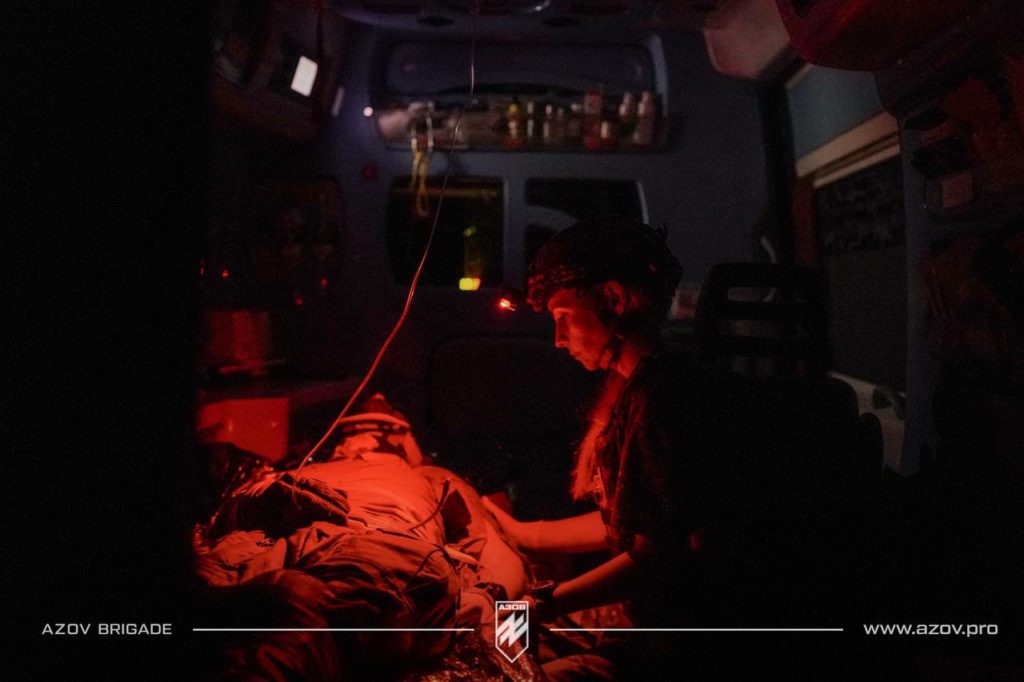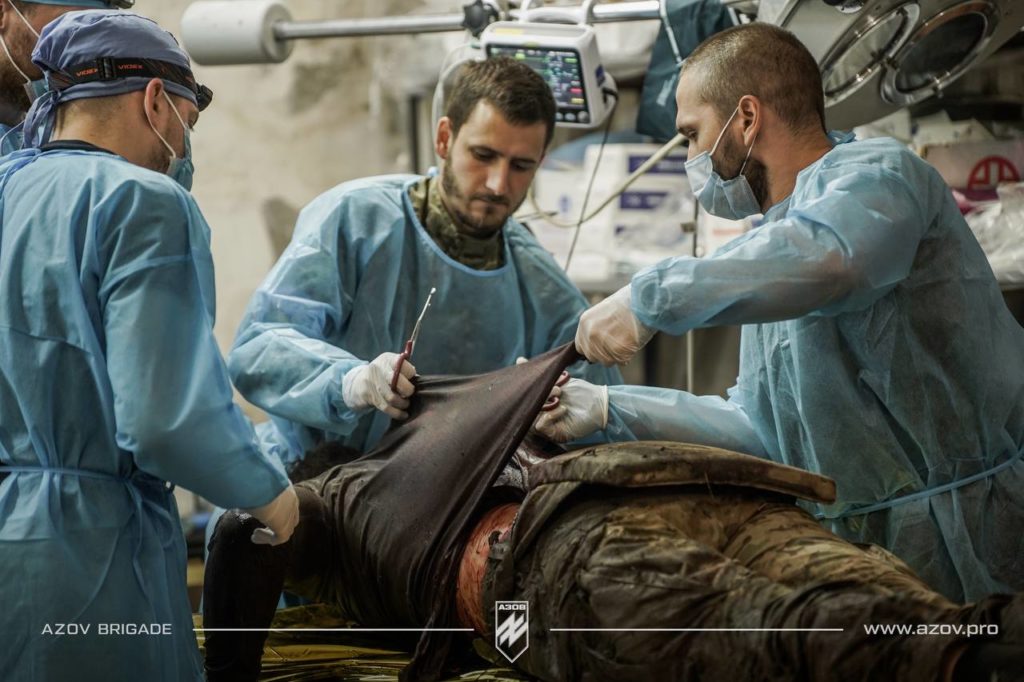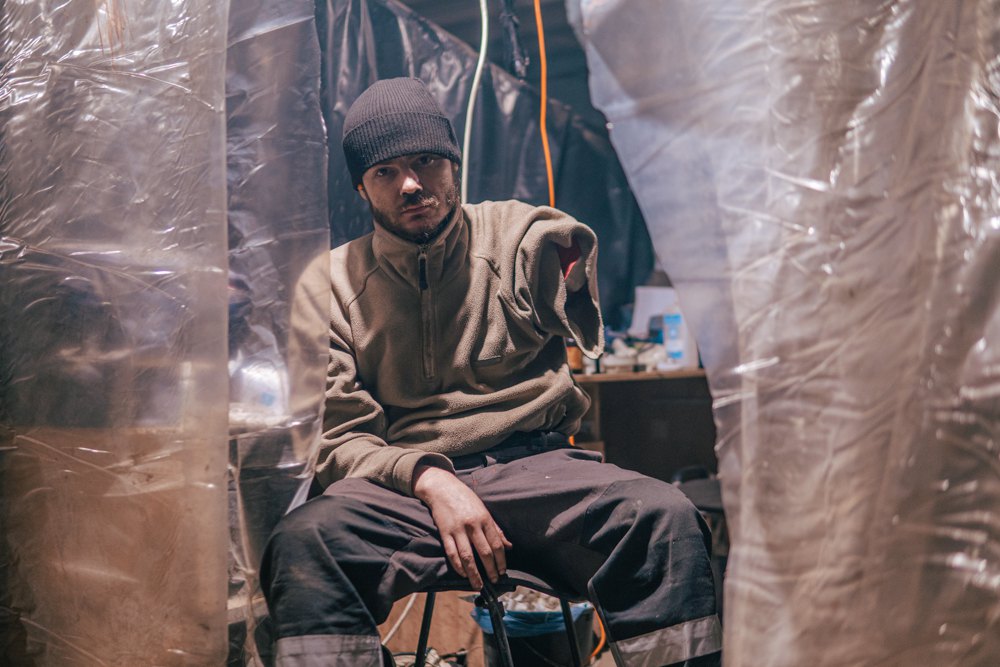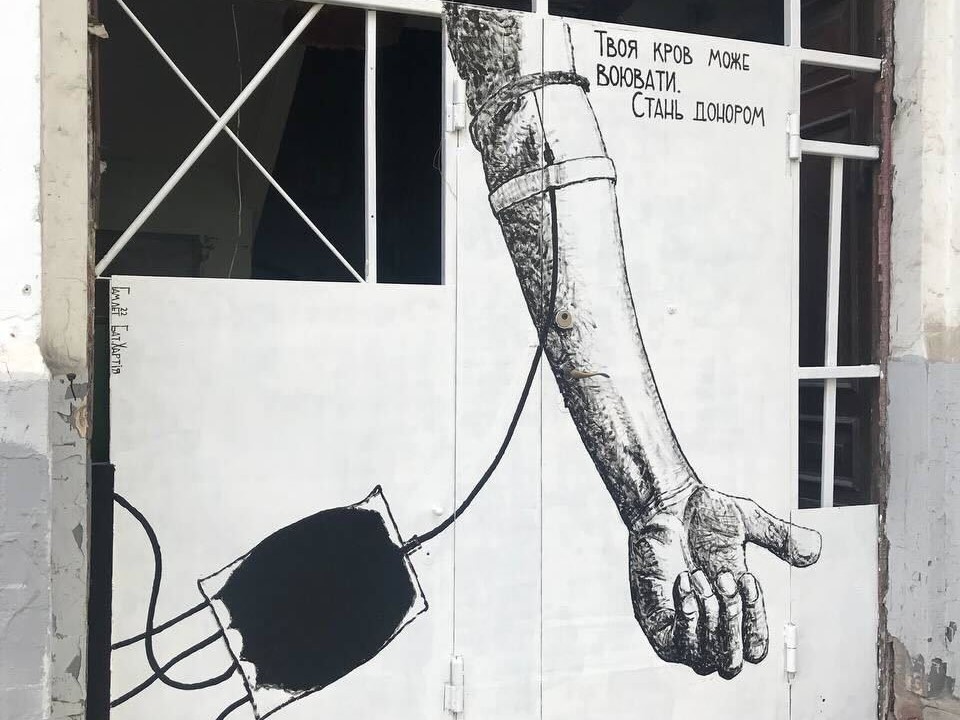On 11 November 2023, Azov brigade combat medic Rina Reznik reported a milestone event: her colleague successfully performed a blood transfusion under trench conditions. This remarkable achievement signifies that with expanded training for combat medics, the potential to save more Ukrainian soldiers through transfusions will rise in the future.
Reznik noted the essential technical aspects of the process, including using CredoCube thermoses to freeze and transport blood, which was subsequently warmed using a QinFlow portable warmer, with calcium administered to the patient.
In the majority of cases, transfusions are expected to be conducted in vehicles during the evacuation process to either stabilization points or hospitals. Timely whole blood transfusions are crucial for buying time for the wounded to reach a hospital.
However, the reality in Ukraine does not permit the luxury of helicopter evacuations for the wounded. Even evacuation in armored vehicles is not always a safe option, as they cannot always protect from shelling. Consequently, transporting the injured to a hospital or even to a stabilization point within the “golden hour” is often an unattainable mission. Sometimes evacuations can extend up to 10 or 12 hours, during which combat medics, trained in advanced trauma care, stay with the injured, Reznik explained in her article for Dzerkalo Tyzhnia.
That’s why the first instance of a blood transfusion in the trench holds such significance. Given the considerable challenges of transportation, it provides an opportunity to save those wounded who might have perished to their injuries en route to a stabilization point.

The successful execution of such a transfusion requires not only well-trained personnel but also specific equipment. In her comment to Euromaidan Press, Reznik listed critical items needed for the procedure:
- Professional fluid warmers and associated consumables (specifically, the Thermal Angel, Mequ, and QinFlow models),
- Refrigerators (Delta brand or automobile refrigerators capable of maintaining a temperature setting of 2-6 degrees Celsius, with a capacity not exceeding 10 liters) and thermoses for blood storage (such as Coolcube, Credocube),
- Rapid blood type testing kits,
- “Golden-hour” blood containers designed for a single blood pack,
- Blood transfusion systems,
- Pressure infusion cuffs for blood transfusion,
- Vehicles for transporting the wounded (preferably Nissan Patrol).
Hypovolemic shock, a severe decrease in blood volume due to acute blood loss and tissue damage, is one of the most widespread causes of preventable deaths among soldiers. The initial response is the application of a tourniquet to slow the bleeding, followed by steps to restore adequate blood flow to vital organs to prevent hypoxia.
Euromaidan Press communicated with a combat medic of the Azov Brigade, who shared frontline experiences of operating without the ability to perform whole blood transfusions, which is still the most common situation. Medics use blood component preparations or volume replacement therapy with crystalloid and colloid solutions to restore blood volume. However, the main issue with such solutions is that they cannot fully replace the critical blood elements necessary for transporting oxygen and facilitating clotting, which leaves the brain and other organs vulnerable to hypoxia.
On the contrary, whole blood is a complex combination of various components that not only fill blood vessels and raise blood pressure but also prevent hemorrhagic shock, thereby enabling the adequate delivery of nutrients and oxygen.

However, until a recent government resolution on 30 June 2023, such transfusions by non-medically educated personnel would have been illegal. The resolution marked a pivotal change, establishing supply chains for blood accessibility not just in aid stations but also in transport during evacuation. It signaled a move from a prohibitive stance to a more complex yet effective strategy of training and permitting such procedure.
The Medical Command had mandated that only individuals with medical education were to carry out battlefield transfusions, a point of contention since combat medics were often the only medical personnel available before evacuation. This policy faced criticism, as it restricted life-saving procedures.
The law allowed blood transfusion to be performed by those with specific qualifications to work with blood, such as anesthesiologists, transplant specialists, transfusion specialists, vascular surgeons, and other medical professionals or military personnel who underwent a special training program.
The Health Ministry required that both combat medics and doctors receive specialized training to qualify for performing transfusions.
The combat medic role was introduced into Ukraine’s armed forces in 2017 with the intent to supersede sanitary instructors, as outlined in the Strategic Defense Bulletin. However, the formal duties for this role were not established, leading to a legal grey area. The Medical Command’s concern was to avoid breaching Criminal Code Article 138, which pertains to “Illegal medical practice.” Nevertheless, many tasks performed by medics, like starting IV lines and administering painkillers and antibiotics, technically constituted medical treatment and were thus, under the law, potentially illegal when performed by non-medically licensed individuals.
Ukraine’s tactical medicine, before the 2014 Russian invasion, was based on outdated Soviet-era practices. To modernize, Acting Health Minister Uliana Suprun recruited American paramedics and instructors with experience from Iraq and Afghanistan, signaling the start of a significant transformation – from first aid kits filling to methods of providing first aid under frontline conditions. The subsequent proactive efforts by volunteers who facilitated the training and equipped the medics with first aid kits marked the beginning of a difficult transition from entrenched protocols to contemporary battlefield medical tactics and solutions.
The Azov battalion has been instrumental in this evolution, having started training its medics in blood transfusions in 2020. This training proved essential, especially during the Azovstal plant siege, lasting 86 days, where medics performed transfusions under siege conditions, often being the sole chance for survival for the defenders.

One of the first successful reported transfusions indicates Ukraine’s progress towards NATO standards in tactical medicine. Despite challenges in securing the necessary equipment for transfusions and other emergency care, Ukraine is at the forefront of implementing battlefield blood transfusions in wartime, setting an example that could reshape the understanding and capabilities of tactical medicine globally.
Amid the heightened need for blood transfusions for both military personnel and civilian casualties of Russian aggression, Ukraine has launched the “Your Blood Can Fight. Become a Donor” campaign, which seeks to inspire Ukrainians to donate blood.

Read also:
- Weekly Frontline Update: Cluster munitions save Ukraine from Russian onslaught on eastern front
- “Not how it looks in motivational videos”: Ukrainian combat medic dispels myths about war
- US medical team performs microsurgery on Ukrainian soldiers’ injuries in Lviv, Ukraine
- Ukraine develops versatile robotic platform for frontline missions


